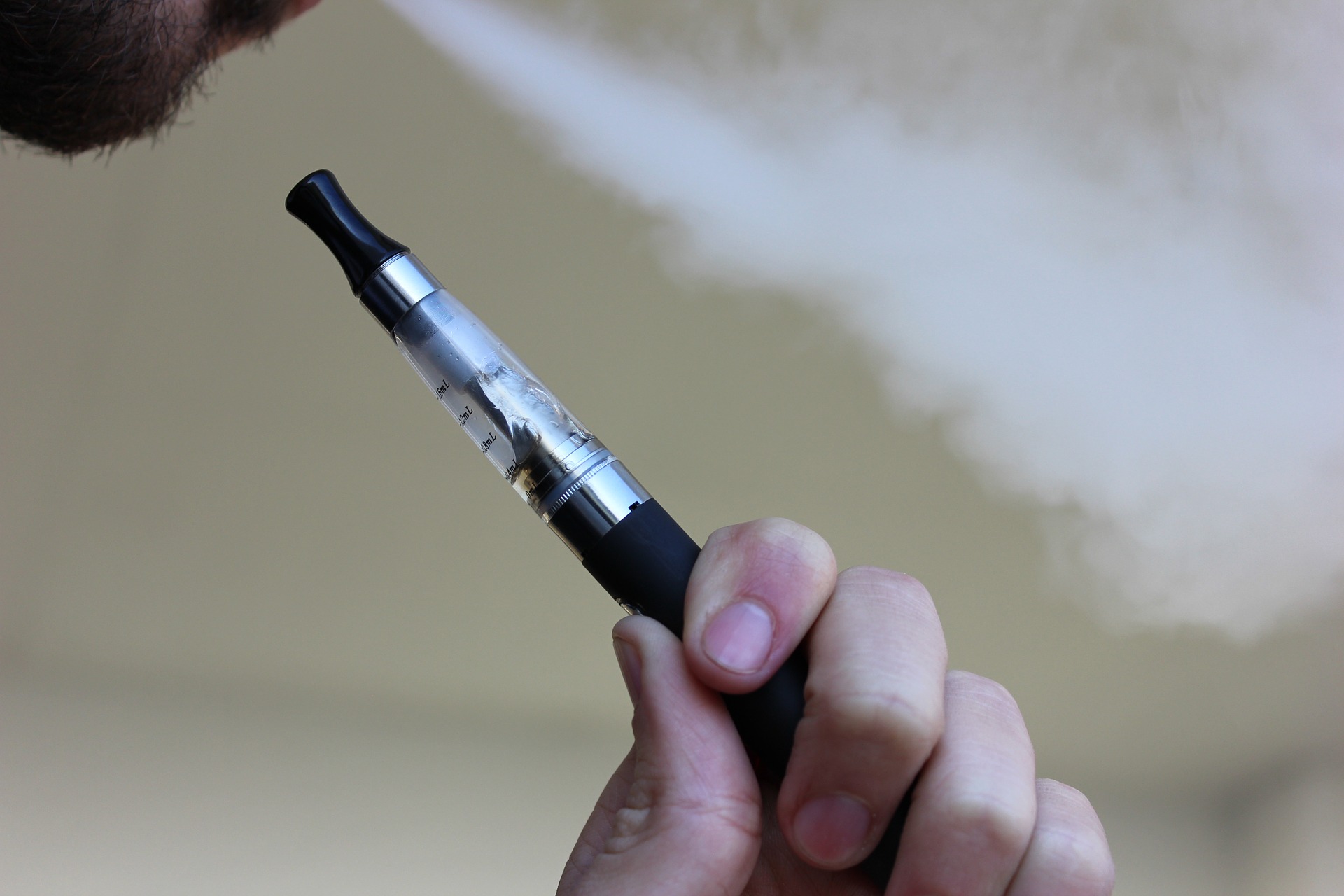Vaping started as a type of option that gave smokers a healthier smoking alternative to regular nicotine cigarettes. Electronic cigarettes were marketed as a way to ease the transition from traditional cigarettes to not smoking at all. Smoking e-cigarettes is known as vaping and experts are now warning that this type of cigarette substitute is not only not any healthier for you than using tobacco products, but it may be as dangerous as handing an unlimited online poker account to a card game addict.
E-Cigarettes
E-cigarettes were developed to help nicotine addicts sooth their addiction. The e-cigarettes work by heating nicotine, which is extracted from tobacco, and then adding flavorings and other chemicals. Users inhale the resulting water vapor.
While it’s known that nicotine cigarettes contain approximately 7000 chemicals, no one really knows what chemicals are in e-cigarettes. Users assume that it’s less but there’s no definite answer. Michael Blaha, Director of Clinical Research at John Hopkins Ciccarone Center for the Prevention of Cardiovascular Disease says “People need to understand that e-cigarettes are potentially dangerous to your health. You’re exposing yourself to all kinds of chemicals that we don’t yet understand and that are probably not safe.”
However, medical professionals don’t see e-cigarettes as a good smoking cessation tool. They say that the e-cigarettes are as addictive as nicotine. New research seems to support this view.
Gen-Z
Among youth, e-cigarettes are becoming increasingly popular. In 2015, the U.S. surgeon general warned that e-cigarette use had increased 900 percent among high school students, even though 40 percent of those young users had never smoked regular tobacco.
Blaha says that e-cigarettes may be particularly enticing to young people because many teens believe that “vaping” is less harmful than smoking, they are cheaper than traditional cigarettes and they are often flavored with tastes and smells, such as apple pie or watermelon, that are particularly appealing. Finally, e-cigarettes have no smell so there’s less of a stigma to their use.
Blaha says, “What I find most concerning about the rise of vaping is that people who would’ve never smoked otherwise, especially youth, are taking up the habit. It’s one thing if you convert from cigarette smoking to vaping. It’s quite another thing to start up nicotine use with vaping. And, it often leads to using traditional tobacco products down the road.”
Edgy Trend
Vaping has now become an edgy trend among Gen Z-ers. It competes with marijuana as an attractive way to “be cool.” The parallel trend involves non-smokers who are taking to vaping as an alternative way of lighting up.
There’s been a rash of e-cigarette and vaping deaths recently as well as serious complications that have resulted from the use of the products. These include young people whose lungs have almost completely collapsed and who will be dependent on artificial breathing devices for the rest of their lives.
Truths and Myths
The news that, as of mid-September, at least 6 deaths have been attributed directly to e-cigarette and vaping products, is prompting the government to sit up and take notice. The Trump administration has vowed to remove flavored vaping products from the market.
Health officials, however, are more concerned with the public’s ignorance about vaping. They say that that lack of knowledge is causing serious injury and death. Some of the things that health officials would like people to know:
Nicotine and Cancer
Nicotine itself is not a carcinogen. Close to 7000 other chemicals are added to nicotine found in cigarettes and tobacco products, including lead and formaldehyde. These are the products that are carcinogenic. Since vape products don't have these additives, many people assume that vaping products are safe.
According to the US Centers for Disease Control and Prevention, most e-cigarettes contain nicotine and Dr. Blaha wants the public to remember that nicotine is not completely harmless. "It's not all that toxic to the cardiovascular system, but it can raise the blood pressure," he says. “It can raise heart rates, and it's associated with some but not all of the cardiovascular risks of smoking." Nicotine can also stunt brain development in adolescents.
Safety
The Center for Disease Control has determined that nicotine itself cannot be considered safe. Nor, says CDC, is the method of vaping harmless. “There is a perception that [vaping] is safe," Blaha says. "But the line really should be, it's 'safer' [than smoking], but not safe."
Blaha says that when a person vapes, different substances enter the body and they aren’t regulated or well understood. "When you use e-cigarettes you're getting nicotine, you're getting the solvents, the flavors, you get trace heavy metal exposure from the heating coil, and you get other tobacco metabolites," Blaha says. “Because remember, nicotine comes from tobacco. So, e-cigarettes are considered a tobacco product.”
In addition, the potential for harder drug use and the mental effects of addiction and dependence may rise with the use of e-cigarettes. Blaha warns, "Addiction and the use of nicotine is closely associated with other health disorders like depression. Is it causal? It's not clear. There's a two-way street when it comes to substances like this. People who are depressed may be more likely to use these substances, and these substances may lead to more feelings of depression. Regardless, stress, anxiety and depression are absolutely linked with addiction."
Varied Vapes
There’s more to vaping than nicotine. Some people vape marijuana and others vape herbs. This can be dangerous because the types and amounts of chemicals in vaping products aren't typically standardized. In addition, there are different types of vape pens and methods of use. Blaha notes that, "The complexity of this is how varied user's experiences are. People use everything from occasionally to daily, to a couple of puffs to a lot of puffs, they might use more than one device. There's so many moving parts, unlike a traditional cigarette. The e-cigarette user experience is customizable. The devices, flavors, nicotine levels are different."
Gateway to Smoking
Blaha said that there’s evidence that links vaping to smoking, what he calls the “gateway effect.” Some people start out with an e-cigarette and it causes them to move on to regular cigarette smoking.
Marketing
According to Adi Jaffe, a mental health expert who specializes in addiction, companies selling e-cigarettes and vaping products are marketing straight to young people. Jaffe explains that "Marketing is an incredibly powerful tool and in the context of vaping, what the marketing efforts around vaping did, and did very well, is making people think smoking is the 'old thing,' Vaping is the new tech version. We've fixed all the problems; it's not smoking. It's smoking 2.0."
Jaffe says that the industry is capitalizing on the feeling of ‘newness’ in their marketing. "They're made to look like so many of the other devices that we carry around with us. For young people especially, they integrate into how they already interact with the world. It looks like a thumb drive, it looks like something they already have and know how to use."
Addiction
Vaping and e-cigarettes can, in fact, be addictive, but since they’re legal and are actually acceptable in places where cigarettes are not, users have an easier time of feeding their habits. There have been reports of people who take a puff of their vape pens every 10 minutes and others who confess to sleeping with their pens under their pillow.
Awareness
Blaha says that there’s more awareness now about the possible dangers of e-cigarettes and vaping but many clinicians and medical professionals don’t yet have enough information to treat someone who has become ill from using vaping products.
"All clinicians from obstetrics doctors to pulmonary doctors, everyone needs to learn about this. The problem is, we want to learn about things that have high quality information and evidence, and there just isn't a lot out there," he says.
Jaffe agrees. "We find out about things so slowly in research. It takes a decade to 15 years before research evidence is so strong, and I think vaping is exactly one of those examples. We're not going to find out more about vaping until more of these recent events continue to put the issue in the public interest."







